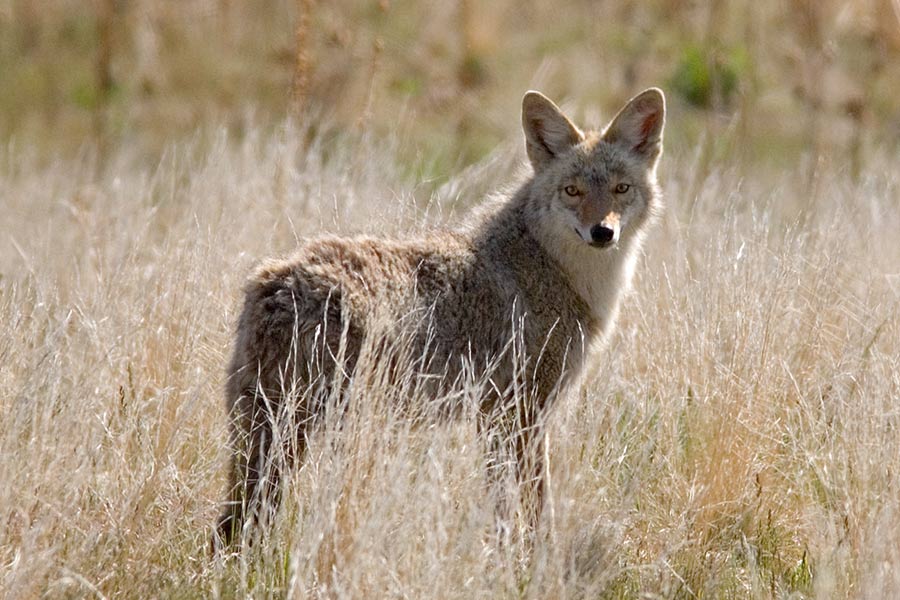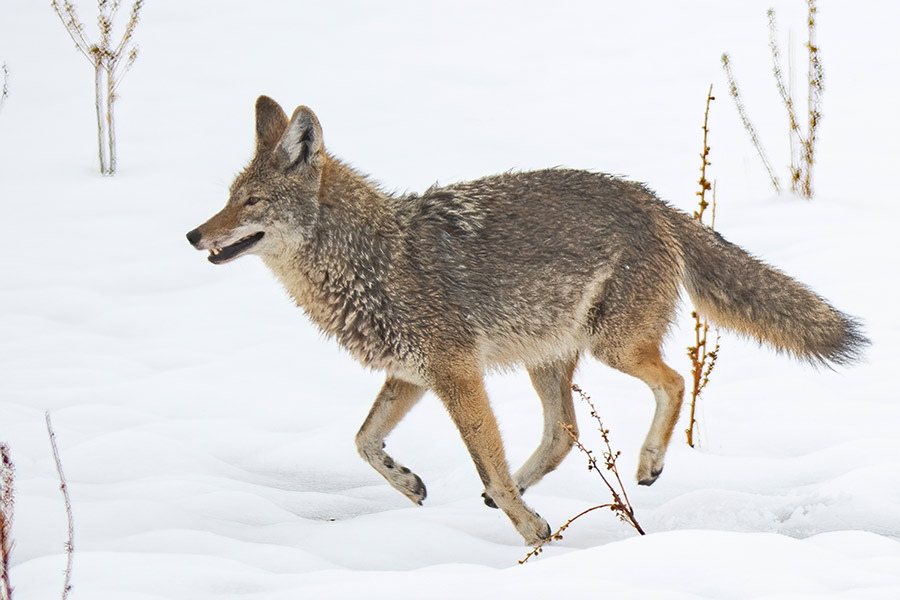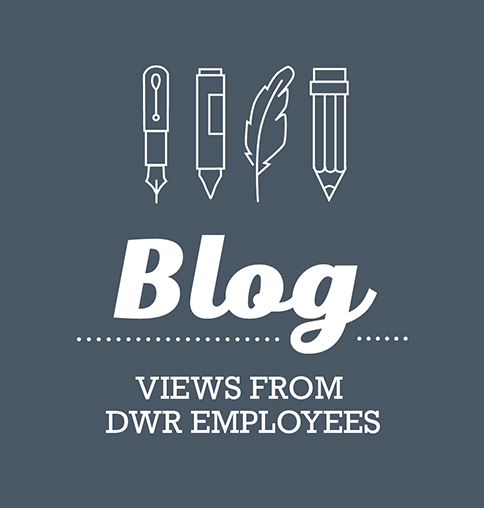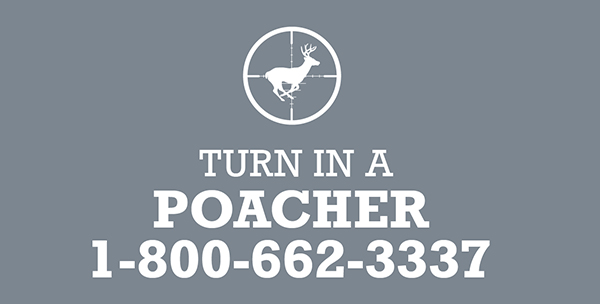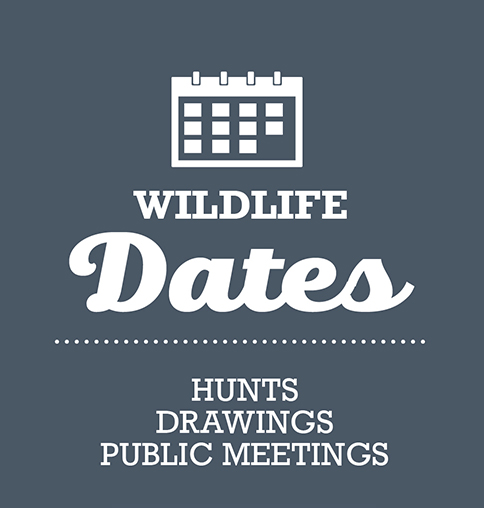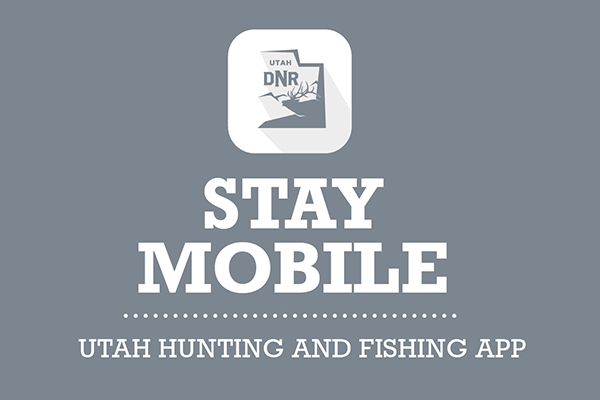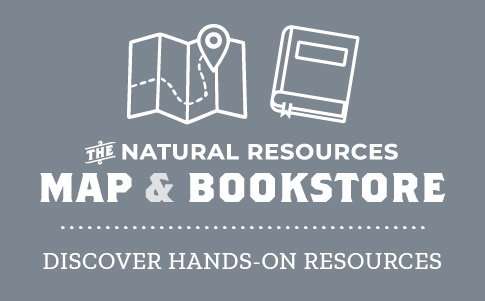Utah's Predator Control Program FAQ
Learn more about the program, how it works and how you can participate
How does the Predator Control Program work?
The DWR has a predator control program that provides incentives for members of the public to remove coyotes for the benefit of mule deer. Participants in this program will receive up to $100 for each properly documented coyote that they kill in Utah. For details, see the rest of this page and our coyote hunting boundaries map 
When does the increased bounty start and where can I find a map of the bounty areas?
The $100 bounty for coyotes killed in mule deer habitat areas begins April 1, 2025. Coyotes killed from that date forward will be eligible for the increased bounty. The bounty for coyotes killed in Utah and outside of mule deer habitat will remain at $50. The Utah Hunt Planner has maps of the $100 coyote bounty areas and the $50 coyote bounty areas. You can also view a PDF of the bounty areas here.
How do I register for the program?
To register for Utah's Predator Control Program, participants must follow the program rules and guidelines. Participants collecting $100 bounties for coyotes killed in mule deer habitat will follow the same process as participants collecting $50 bounties for coyotes killed outside of mule deer habitat. Specifically, participants must:
- Complete the online training and registration course every 365 days.
- Download the Coyote Bounty Reporter (Survey123) app onto your phone and record all coyote take through this app. (See instructions for downloading the app here.)
- Request compensation only at designated sites and on designated days and times. The DWR will keep the jaw to prevent double payments. Program participants are responsible for disposing of carcasses.
- Follow all of the rules and regulations related to trapping and firearm use, as detailed in the Utah Furbearer Guidebook and the Predator Control Incentives rule (R657-64), Utah Code and local law.
You do not need a Utah hunting license to participate in the program. Nonresidents can also participate in the program if the coyotes removed are within Utah state boundaries. If you plan to trap coyotes, you are still required to have a trap registration license.
What are the program requirements?
In 2018, the Utah Wildlife Board passed several rule amendments to the Predator Control Program. (View the R657-64: Predator Control Incentives rule).
Here is a summary of the program and requirements:
- All participants must recertify each year. This means that you are required to take the online training course once every 365 days. When you complete the course, we will issue you a COR (Certificate of Registration) that will be valid for one year.
- You must submit all coyotes within one year of the kill date. Coyotes must be in a condition that makes it easy to identify them as coyotes. They must be free of maggots, other carrion organisms and any rot. Jaws must be labeled with the date and time of kill.
- Participants may only claim payments for their own coyotes. Only the individual who has killed a coyote can claim payment for that coyote.
Program participants are required to report their kills through the Utah Coyote Bounty Reporter (Survey123) App, which is free and available for iOS and Android smartphones. The app replaces the paper compensation forms, and was made the mandatory reporting method as of July 1, 2019. Please ensure you have the latest app version that was launched Aug. 29, 2023. Many of the glitches previously experienced by users have been resolved in this updated version. The DWR has not accepted kills recorded using the paper compensation forms since July 1, 2022.
The app does not replace the requirement to check in the lower jaw at a designated check-in station. We will still offer check-ins across the state throughout each month. Learn more about the Utah Coyote Bounty Reporter (Survey123) app.
- In order to submit a claim using the smartphone application, you must have location data turned on. Utah Code 63G-2-305 protects any location data that you submit from public disclosure.
- If the Coyote Bounty Program pays the total annual appropriated budget during any fiscal year, per coyote compensation will decrease by $5 during the following fiscal year. If the program has a surplus in the annual budget at the end of any fiscal year, payments per coyote will increase by $5.00 the next year, up to a maximum of $100 in mule deer habitat areas or $50 throughout the rest of the state. Essentially, the budget may fluctuate in $5 increments based on the previous year's expenditure.
All of the other program requirements will remain in effect. You must also follow these requirements in order to participate in the program.
When and where do I check in coyotes?
Every month, the DWR updates the list of coyote check-in locations and times. When you visit a check-in site, you must bring proof that you completed the registration and training course and submitted coyotes through the Utah Coyote Bounty Reporter (Survey123) app with location data turned on.
What do I need to bring to a coyote check-in location?
To receive compensation for coyote removal under Utah's Predator Control Program, participants must:
- Remove and submit the coyote's lower jaw (at least the front two-thirds of the jaw). The DWR will keep the jaw and may pull teeth, but participants are responsible for disposing of carcasses.
- Provide proof of app submission for each coyote.
- Provide proof of a valid COR from the program training and registration course.
- Participants' DWR profile must have their mailing address so the bounty payment can be mailed to them.
The Coyote Bounty Reporter app isn't working on my phone. What do I do?
Ensure you have the latest version of the app downloaded onto your smartphone. If you have the latest version and are still experiencing technical issues, please call the nearest DWR regional office.
Can I still use the paper compensation form?
The mobile app was made the mandatory reporting method as of July 1, 2019. Please ensure you have the latest app version that was launched August 29, 2023. Many of the glitches previously experienced by users have been resolved in this updated version. The DWR no longer accepts kills recorded using the paper compensation forms.
How should I store coyotes before I bring them in for reimbursement?
The DWR requires all hunters to use one of the following storage methods:
- The best method is to cut out the jaw, store it in a plastic ziplock bag and place it in a freezer. Label each bag with the take date so that jaws can be matched to app submissions at check-in.
- Also, you may place the lower jaw (at least the front two-thirds of the jaw) into a paper bag so it can dry out. On the outside of the bag, please label it with the corresponding number recorded in the order submitted through the Coyote Bounty Reporter Survey123 app.
IMPORTANT: We may reject frozen samples that we cannot process. Proper disposal of carcasses is the hunter's responsibility.
When can I expect to receive my reimbursement payment?
We ask that you give us 4–6 weeks to process all coyotes and payments. If this is your first time submitting coyotes, the process can be longer due to extra steps being included to add you to our payouts system. Part of the process for new participants includes filling out W9 and FI-170 tax forms, which will be sent to you by the DWR finance staff after you check in your first coyote.
Can I use spotlights to hunt coyotes at night?
Individual counties regulate spotlighting for coyotes and other nonprotected species in Utah. To find out if spotlighting is allowed, contact the sheriff's department in the county where you wish to hunt.
Why is location important in removal efforts?
The recommended coyote removal zone is based on the boundaries of areas that are important to deer. Coyotes primarily kill fawns and can produce more than six pups per year. They have high reproductive potential and can be difficult to hunt. It will be impossible to remove all coyotes from Utah, even with a large effort by the public. Although any coyote taken in Utah can be submitted for compensation, the DWR is recommending specific areas and dates when coyote removal has the greatest potential for benefiting mule deer.
Additionally, in January 2025, the Wildlife Board approved a payment increase to $100 for coyotes taken in mule deer habitat areas to further encourage targeted take. This increase became effective on April 1, 2025. You will be paid according to the new bounty guidelines for any coyotes killed on or after April 1, 2025.
Download the statewide coyote hunting boundaries map that identifies the areas where you should target your control efforts to provide the most benefit to mule deer. To see maps of the areas where the different coyote bounty amounts are in effect, visit COY100 and COY050 on the Utah Hunt Planner.
Why is timing important in removal efforts?
The recommended removal dates are December through June. Because coyotes mate during the winter — usually in January and February — the most effective control efforts will remove coyotes after they form pair bonds and set territories, but before they raise pups. Coyote removal is less effective in late summer. That is when coyotes typically wander and disperse, and often die of natural causes in an attempt to find new territory. These recommended dates are also before the deer fawning season. It is during these periods that deer populations are most susceptible to coyote predation. For the greatest benefit to mule deer, program participants should remove coyotes in the recommended locations and during the recommended season.
How will the Predator Control Program benefit mule deer?
The severity of weather and the amount of forage available are usually the most important factors that limit deer numbers. If the weather is mild and the habitat is good, then removing predators could increase the number of fawns that survive. More fawns could help to stimulate an increase in mule deer numbers. If there is not enough good habitat or there is a harsh winter, then fawns may die from other causes besides coyotes, and predator removal won't help deer populations to grow.
How will the DWR evaluate the effectiveness of this program?
The DWR will assess the program to determine if the money spent compensating for coyote removal has resulted in lower coyote numbers, improved fawn-to-doe ratios and higher numbers of mule deer. The DWR will track the locations where coyotes are being effectively removed and identify areas where additional removal is necessary.
Will the DWR protect my privacy?
Utah has privacy-protection laws that the DWR will follow while implementing this program.
What happens if the program's funding runs out?
The DWR expects to have enough funding to provide reimbursement for all coyotes. A finite amount of money, however, has been appropriated. If reimbursements deplete all of the funds, the program will be suspended until the DWR finds an alternative funding source or the next fiscal year. (State of Utah fiscal years begin on July 1.) The DWR will post notices online if the program has to be suspended for any reason. Additionally, the next fiscal year's payments will be reduced by $5 per coyote if the appropriated funding was exhausted in the preceding fiscal year.
How can I learn more about this program?
If you have questions or comments about how the program will work, please contact the nearest DWR regional office.
What legislation created this program?
The Utah Legislature passed two predator-related bills in 2012. The first bill, Predator Control Funding (Senate Bill 87), added a $5 fee to all Utah big game hunting permits. The money funds a program to control populations of predatory animals that endanger the health of Utah's non-predatory wildlife.
The second bill, Mule Deer Protection Act (Senate Bill 245), allocated general funding to the Utah Division of Wildlife Resources ($500,000) and the Utah Department of Agriculture and Food ($250,000). The legislation directed our agencies to work together — and with other government entities — to administer programs that reduce and control coyote populations, particularly in areas where predation of mule deer occurs.
How long can I keep my coyotes (jaws) before submitting?
Participants must submit coyotes at a designated check-in site within one year from the date they are removed. This amendment became effective August 7, 2018. To effectively assess the program, the DWR must receive coyotes in a timely manner.


